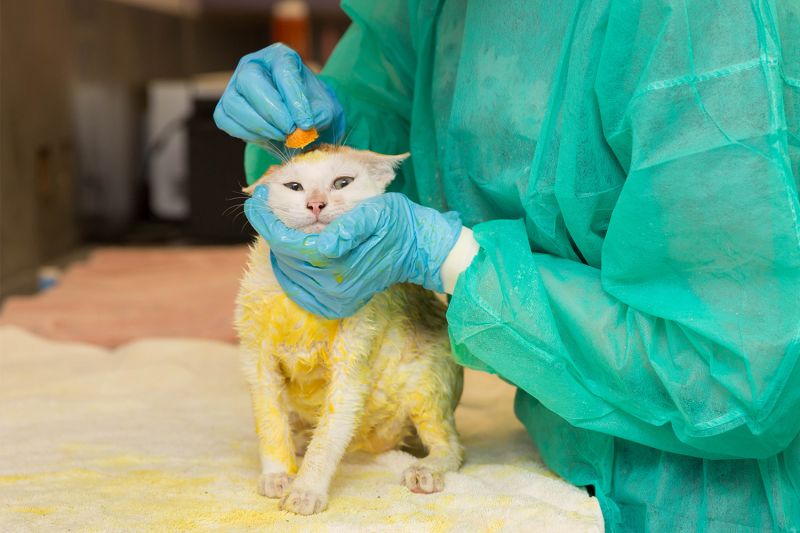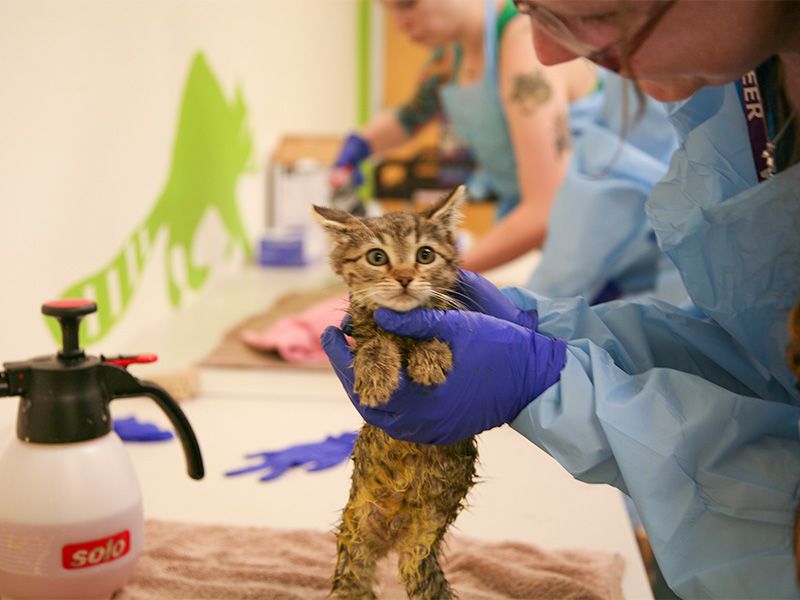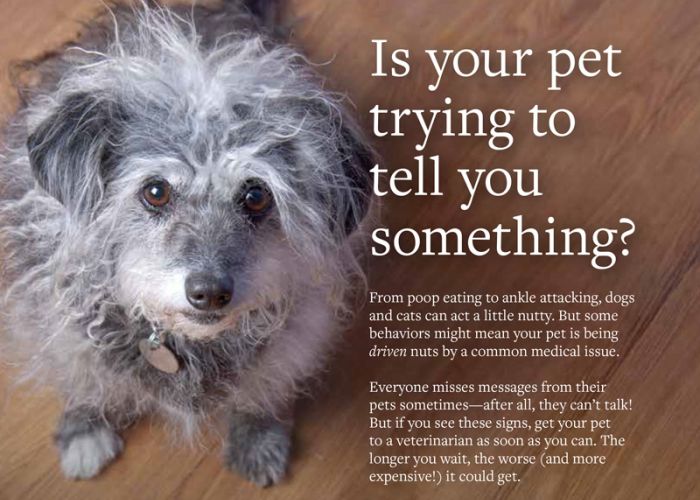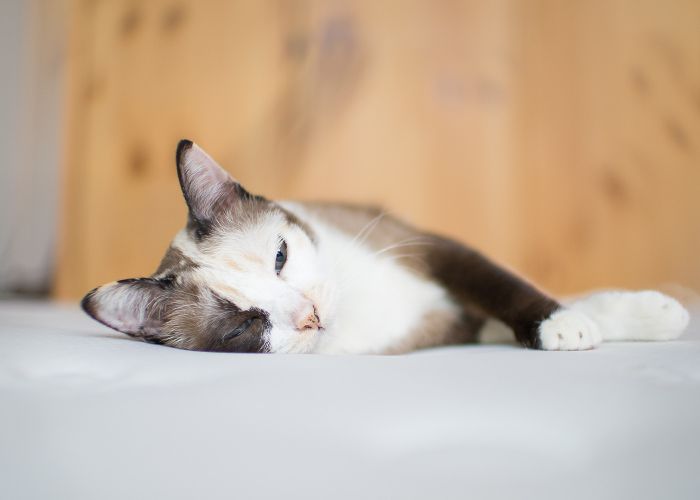Ask the expert: Ringworm treatment
The ‘outside-in’ and ‘inside-out’ approach to M. canis

If anything is guaranteed to elicit inward groans from people in the sheltering and rescue world, it’s a diagnosis of ringworm (specifically, the Microsporum canis variety).
True, the fungus itself isn’t life-threatening. But it is highly contagious, and animals can take six weeks or longer to cure. So it can be more than a little disappointing to discover that a litter of adorable kittens at prime adoptable age is infected.
Still, there’s no cause for panic, says Dr. Erica Schumacher, outreach veterinarian with the Shelter Medicine Program at the University of Wisconsin-Madison School of Veterinary Medicine. With the right treatment and basic precautions, you can speed animals’ recovery and prevent ringworm from spreading to other animals and people.
In this edited interview, Schumacher shares her top tips for treating ringworm. (Check out Part 1 of this Q&A for her tips on identifying and diagnosing ringworm.)

What treatment do you recommend for animals infected with M. canis?
You have to treat ringworm from the outside in and from the inside out. For the outside, you do lime sulfur applications twice a week. We know it stinks, but it’s the only one shown to have that residual activity on the coat so you don’t have to apply it every day.
Use a garden sprayer and Fear Free handling to apply the lime sulfur to the entire coat. (Shockingly, I still encounter shelters who submerge the cat in a bucket. That’s not the way to do it.) Use a rag or cotton ball to treat the areas around the eyes, face and inside the ears. Don’t put any ointment in the eyes; that can actually trap the lime sulfur there. If it gets in the eyes, you can rinse it out with saline.
You don’t want to dry the animals’ coats. You want them to dry on their own, but make sure they’re in a warm place. They may lick off the lime sulfur a little bit, but it’s not going to cause problems so we don’t put on an e-collar. We want to minimize stress as much as possible.
If lime sulfur rinses aren’t an option, there are other topicals that can be effective; the animal may just take longer to cure. Lime sulfur is the treatment of choice because it (along with a systemic antifungal) was the fastest treatment option found during shelter studies, and we know that in a shelter, time matters.
Are there any common mistakes you see people make when it comes to the lime sulfur treatment?
The lime sulfur should be mixed 8 ounces to a gallon of warm water (a 1:16 concentration), not 4 ounces to the gallon as the label says. I’ve worked with shelters that have been doing everything else right except they’ve been using the wrong concentration, and the cats take way longer to cure.
Also, spot-treating lesions isn’t as effective as full-body application for M. canis. The spores aren’t just on that lesion; they’re going to be all over their coat.
What role do oral antifungals play?
With lime sulfur, you’re decontaminating the coat and preventing environmental contamination, but because ringworm is in the follicle, you’re not getting at the infection on the hair that hasn’t grown out yet. That’s where the oral antifungal medications come in. You can choose itraconazole or terbinafine. Either one works, with the caveat that compounded itraconazole isn’t reliable; it has to be a brand name like Sporanox or Itrafungol. Terbinafine can be compounded.

How does treatment differ for “dust mop” cats?
It depends on the shelter. By the time you have a culture result, it’s been at least five to seven days, and the animal will have groomed off whatever spores were on their coat. Some shelters may opt not to do anything, while others feel more comfortable doing one lime sulfur application before they adopt them out. Back in the day, veterinarians were taught that animals could be asymptomatic carriers of ringworm, and that’s not true. They can be a mechanical carrier, like a dust mop cat, carrying a few spores on their coat, but those cats are unlikely to infect another animal or human.
How do you know when a cat has been cured?
Ringworm cure has traditionally been defined as two consecutive negative cultures; however, some shelters are having success with releasing cats from treatment after only one. We don’t have any research on this yet, but I’m hopeful it will be forthcoming. Anything we can do to shorten an animal’s length of stay in the shelter system is a win-win for the animal and the shelter.
Do you have any other treatment tips?
I want to stress the importance of having good quality housing and care for infected animals. Isolation doesn’t mean no one touches them. We want to be sure they’re still socialized with staff and volunteers wearing protective clothing, after they have cared for healthy cats. Disinfectant foot baths don’t work and give you a false sense of security; use shoe covers or dedicated boots. Crocs are a good option because you can spray them down and even put them in the wash. All too often, the ringworm cats get put in wire crates in a closet, and that’s not humane. Ringworm is one of longest treatments we have, often six weeks or longer. If you can’t get them into foster or adoptive homes, they should have the best housing in the shelter, not the worst.






